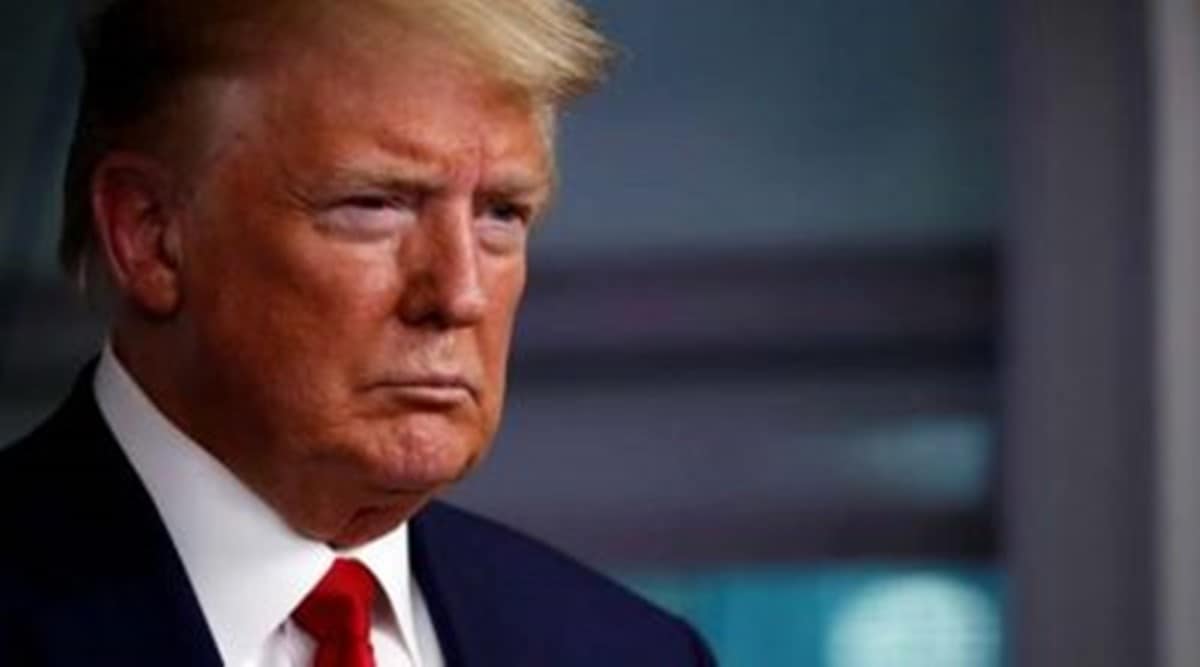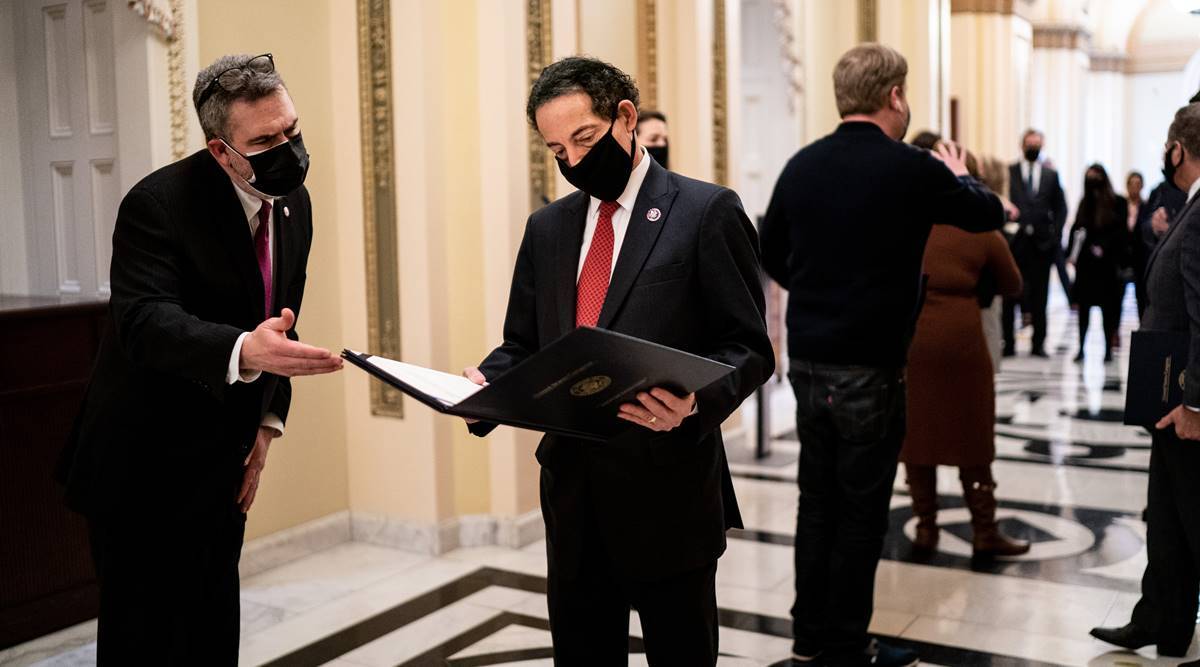Written by Eileen Sullivan
Former President Donald Trump’s second impeachment trial began Tuesday, 370 days after he was acquitted of high crimes and misdemeanors in his first trial. He is accused of “incitement of insurrection” for his part in kindling the violence Jan. 6 at the U.S. Capitol. House impeachment managers and Trump’s defense team clashed over whether the Constitution allowed the Senate to hold a trial of a former president, ultimately deciding it could move forward.
Here are some takeaways from the first day.
Senators ruled that a former president can, indeed, stand trial for impeachment.
In a 56-44 vote, the Senate rejected the argument from Trump’s defense team, and decided along mostly party lines that it had the jurisdiction to try an impeached former president. This paved the way for the trial to proceed Wednesday.
The impeachment managers, led by Rep. Jamie Raskin, D-Md., argued that dismissing this impeachment trial would create a “January exception,” setting the precedent for a lame-duck president to act without consequence in the final weeks of his administration.
The defense team characterized the prosecution’s case as a “snap impeachment” and argued that a former president should not have to stand trial because it would establish the precedent for any former official to be punished after leaving office at the whim of the party in power.
 Former US president Donald Trump. (File)
Former US president Donald Trump. (File)
On the question of jurisdiction, only a simple majority was required, unlike the two-thirds majority needed for a conviction. Six Republicans joined all 50 Democrats in deciding that the Senate could proceed with the trial.
Democrats, led by Raskin, promised compelling video footage of the events of Jan. 6, and they delivered.
In a 13-minute video of scenes from the Jan. 6 assault on the Capitol, the lead House impeachment manager, Raskin, showed a graphic visual record of the attack, including rioters’ explicit language and rally cries, as well as clips of Trump’s comments during the day — like his speech to supporters before some of them stormed the Capitol and a Twitter post, hours after the attacks, in which he wrote, “Remember this day forever.”
The scenes of chaos in the video showed a mob of protesters violently pushing past security barricades and lines of police officers. Footage from inside the building included an officer screaming as he was being crushed by a door as well as the gunshot fired by another officer, which killed one of the rioters, Ashli Babbitt.
For many of the senators Tuesday, the footage delivered different vantage points than what they experienced firsthand, as they were rushed out of the very same Senate chamber in shock and fear.
“You ask what a high crime and misdemeanor is under our Constitution,” Raskin told the senators at the conclusion of the video. “That’s a high crime and misdemeanor. If that’s not an impeachable offense, then there’s no such thing.”
One of Trump’s defense lawyers, David Schoen, accused the House managers of hiring a “movie company” to string together the most disturbing footage from that day. Schoen also offered a video account featuring a collection of calls by Democrats for Trump’s impeachment over the past four years, a false equivalency as none of those comments led to violence.
The expected outcome of this trial is the same as Trump’s first.
Even though it is a new Senate — with Democrats in the majority — and the nature of what Trump is accused of is different from the allegations he faced in his first impeachment trial, there is little question that Trump will ultimately be acquitted, the same as he was a year ago.
The Democrats would need 17 Republicans to break with the former president and vote with them to have the two-thirds necessary to convict Trump. If the six Republican senators who voted with Democrats on Tuesday on the Senate’s right to hold the trial also vote to convict Trump, Democrats would still need 11 more Republican defectors to secure a conviction.
For Democrats, a guilty verdict would be a formal, permanent renunciation of Trump’s behavior. If Trump were to be convicted, the Senate could hold a vote to decide whether to bar him from running for office again — something Democrats have argued is in the country’s best interest.
An acquittal would give Republicans a stay of condemnation of the most popular member of their party. But it would only delay the inevitable reckoning their party faces between the more moderate members and the far-right wing that not only defends Trump but also seeks to punish fellow Republicans for betraying him.
For Democrats, an acquittal could still be a political victory of sorts because the trial was an opportunity to publicly condemn Trump’s actions in his last days as president and delivered a formal record of Republican senators refusing to punish him.
Already, Sen. Mike Lee, R-Utah, has faced criticism for suggesting that Trump be given a pass for the events of Jan. 6.
“Look, everyone makes mistakes, everyone is entitled to a mulligan once in a while,” Lee said on Fox News after the House managers’ arguments, using a golf term for a do-over.
Sen. Patrick Leahy, D-Vt., is a witness, a juror and the judge.
As the longest-serving Democrat in the Senate, Leahy, 80, is the presiding officer in the Senate’s trial of Trump.
Last year, Chief Justice John Roberts served in this role, an appointment stated in the Constitution. This time, however, Roberts was not interested in the job. And because the Constitution does not stipulate who should oversee the trial of a former president, it fell to Leahy, giving him the authority to rule on key questions like what evidence is admissible.
On Jan. 6, Leahy was among lawmakers who had to rush away from the violent mob, making him one of hundreds of witnesses who were in the Capitol that day. And as one of 100 senators, he will also vote on whether to convict Trump of inciting violence against the United States.
Leahy’s three hats were among several reminders that these proceedings in the Senate, while called a trial, are not analogous to those held in courtrooms across the country.
Trump’s defense team argued unsuccessfully that Leahy’s conflict of interest is one reason the trial is unconstitutional.
The first lawyer to speak in Trump’s defense left senators a bit confused about his team’s strategy.
Bruce Castor, the lawyer who began the Trump defense team’s arguments Tuesday, took senators down a winding path of generalizations about the Senate, Trump’s right to free speech and the difference between murder and manslaughter in the criminal justice system.
“I have no idea what he’s doing,” Alan Dershowitz, who served on Trump’s defense team during his first impeachment trial last year, said on the conservative television station Newsmax. “Maybe he’ll bring it home, but right now, it does not appear to me to be effective advocacy.”
As Castor spoke, other senators appeared restless and started talking among themselves.
“The president’s lawyer just rambled on and on,” Sen. John Cornyn, R-Texas, told reporters after the proceedings ended. “I’ve seen a lot of lawyers and a lot of arguments, and that was not one of the finest I’ve seen.”
Schoen, another of Trump’s lawyers, appeared to regain the attention in the room as he argued that the Constitution did not allow for the impeachment of a former president.
“This trial will tear this country apart, perhaps like we’ve only seen once before in our history,” Schoen said, an apparent reference to the Civil War. “As a matter of policy,” he added, “it is wrong, as wrong can be for all of us as a nation.”
This article is auto-generated by Algorithm Source: indianexpress.com


